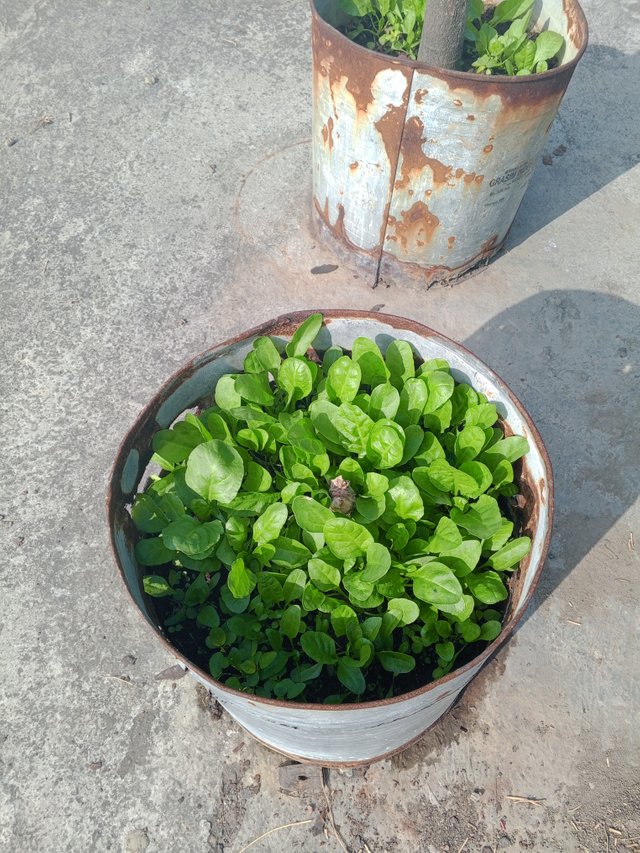Basic Knowledge in Agriculture #9
@arjinarahman ©
#Bangladesh 🇧🇩
As-salamu Alaikum.
Hello Steemians! Hope you all are doing well. Today, I am participating in an amazing contest in the "Steem-Agro" community, organized by @hive-118902 .
Here is: Contest Link .
Let’s get started!
Basic Knowledge in Agriculture |
|---|
_20241222_155239_0000.png)
Designed with Canva Pro

What are the different soil types and their characteristics.
As a river based country, Bangladesh has a variety of types of soil. The country's location and river system create different types of soil, which are very important for farming. The types of soil are a major influence on agriculture here.
Sandy Soil:
 | Our Pumpkin Plants at Sandy Soil |
|---|
Northern part of Bangladesh and river banks are mostly sandy soil. This soil quickly absorbs water but can’t hold for long. It has comparatively less nutrients and organic matter and also is not very fertile land. It's tough farming in the sand when seasons are dry. Yet, this soil isn’t all bad, as crops like sugarcane, potatoes, or vegetables grow well here though. This type of soil is present along rivers like Teesta and Jamuna banks.
Loamy Soil:
| Loamy Soil for my Rooftop Garden |  |
|---|
The loamy soils are the most fertile and most suitable for agriculture in Bangladesh. It formed almost everywhere in the country. It is a mix sand, silt and clay. It is good for the water and nutrients to hold and the crops grow easily. Loamy soil is best soil for the growth of many crops such rice, wheat, jute, vegetables and fruits. This soil is much in central regions like Dhaka and Mymensingh.
Clayey Soil:
However, the clayey soils predominates in southern parts of BD, where there is high rainfall. This soil takes water for a long time because it has very small particles. It grows in lowlands and wet areas mostly. Rice plants can properly grow in clayey soil as Aman and Boro varieties. It is hard to grow other crops, though its hard structure does it.
Alluvial Soil:
Rivers make alluvial soil by carrying the sediments. This is very fertile, found in riverine areas and wetlands. It's great for farming, e.g for vegetables, watermelons and fruits. Places of Sunamganj, Netrakona and Kishoreganj are replete with alluvial soil.

Explain the agricultural importance of soil?
Agriculture contributes a lot to Bangladesh’s economy and so does with soil. The main base for growing crops is soil. Main food for Bangladesh is rice, this rice grows best on loamy and clayey soil. Because most of the land has the kinds of soil mentioned here, farming is easier.
 | Our Rice Field |
|---|
Besides growing crops, the soil in Bangladesh does more than that. Soil helps to store water. During rainy season soil takes in extra water and can be used for farming in the dry season. We use tubewell and water pump for bringing water from inside the soil. Rice farming is best cultivated in clayey soils of the south which holds water for very long time.
 |
|---|
Furthermore, crops need the nutrients nitrogen, phosphorus and potassium that soil offers. The alluvial soil is also very good for grows of the fruits and vegetables.
| Vegtabale at Rooftop |  |
|---|
The soil is getting worse day by day. Some of this damage is done by using too much chemical fertilizer and pesticides, and by cutting down forests to farm without any planning. The soil will get better and farming will become better if we use organic fertilizer and follow better farming practice.
Soil isn't only dirt. it’s much more than that. it’s part of our food and economy. It’s important for everyone to take care of it.

| Device Name | infinix |
|---|---|
| Captured by | @arjinarahman |
| Location | Dinajpur (Village Pics) & Narayanganj (Rooftop Pics) |

I invite following users for the contest
@sureway044
@amjadali00
@huraira50


X/Twitter Promotion Link :
https://x.com/arjina_rahman/status/1870780289464828053
Congratulations! This post has been voted through steemcurator09. We support quality posts, good comments anywhere and any tags.
Thanks Dear for mention me here you share such a amazing knowledge and information about the agriculture because the Agriculture Feed's the world's